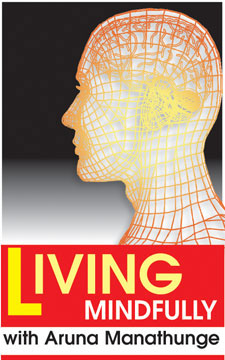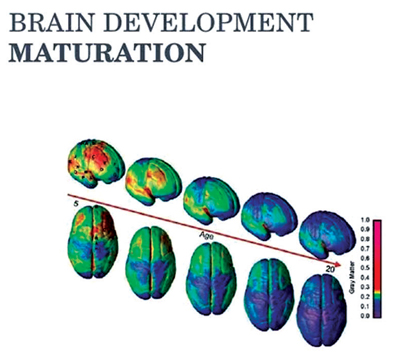|
Benefits
of Mindfulness in Education – Part 9:
Controlling Impulsive Behaviour
  Last week we discussed Neurology research and the discovery that
linked adolescent impulsiveness, their underdeveloped frontal brain
regions and risk-taking behaviour. Last week we discussed Neurology research and the discovery that
linked adolescent impulsiveness, their underdeveloped frontal brain
regions and risk-taking behaviour.
Adolescence is a developmental period, sometimes characterised by
poor decisions and actions that are associated with unintentional
injuries, violence, and substance abuse, early drop out from school,
unintended pregnancy and sexually transmitted diseases. Adolescents,
according to some findings in Neurology, have a heightened
responsiveness to novelty seeking, incentives and socio-emotional
environment during an age when their impulse control is still immature
and vulnerable.
The Marshmallow Experiment
As early as 1960-1970, the University of Stanford, USA, found through
a series of scientific experiments that some of the 7-9-year-old
children have a higher ability as others of the same age to delay
gratification. The experiments became world famous as the Stanford
Marshmallow Experiment and later got adopted by various research centres
to understand the behaviour of small children when asked to delay
gratification. Some very interesting YouTube video clips conducted by a
few centres are available on the web. (Ref: https://youtu.be/NHeHssfjGSA)
In the original Stanford experiment, the behaviour of the selected
group of children was observed up until their late teens and adulthood.
They found that pre-school children who delayed gratification longer
than their counterparts were more successful and competent later as
adolescents and adults. A brain imaging study conducted in 2011, of the
original Stanford participants during their mid-life, showed key
differences between those with high delay times and those with low delay
times in two areas. The ‘prefrontal cortex’ (the area connected to
planning, decision making and moderating social behaviour) was more
active in high delayers and the ‘ventral striatum’ (an area connected to
addictions) was more active in low delayers.
The
‘prefrontal cortex’ of the brain also gets developed due to the practice
of Mindfulness. As such, even the low delayers of the Marshmallow
Experiment can benefit from regular practice of Mindfulness. Let’s
investigate as to how modern programs of Mindfulness help to contain the
likelihood of poor outcomes that may occur as a result of adolescent
impulsiveness and risk-taking behaviour. The 60-Day Mindfulness program
has many practices that help to control impulsive behaviour. One such
daily activity is breathing exercises.
Breathing Exercises Controls Impulsive Behaviour
A new research conducted by the University of California, Los Angeles
(UCLA), suggests that breathing exercises help teens control impulsive
behaviour. The 524 students, ages 14 to 18, recruited for the study,
practiced breathing exercises and learned about maintaining healthy
bodies, minds and lifestyles during the period they would normally take
physical education. The researchers also followed up a control group of
same age students who didn’t go through the program.
 The students who went through the four-week program were less
impulsive than those who didn’t undertake the program. The researchers
noted that the findings were important because lack of control or
impulsivity in adolescence is a key predictor of risky behaviour. The students who went through the four-week program were less
impulsive than those who didn’t undertake the program. The researchers
noted that the findings were important because lack of control or
impulsivity in adolescence is a key predictor of risky behaviour.
Mindfulness of Breathing
Mindfulness of Breathing has many built-in mechanisms to develop
control within the practitioners. Breathing is a neutral object and the
practitioners train and discipline themselves to bring their attention
over and over to that neutral object. They gradually learn not to be
swayed by tempting sounds, thoughts about desirable objects or people,
tasty food or even daydreams.
The ability to be non-judgmental is also developed as a result of
Mindfulness of Breathing. The practitioners learn not to get upset
whenever their mind goes off from the object of breathing. They are
taught to bring back the mind to the object of attention – without
feeling bad about the lapse. Through that they learn to observe and
pause, the almost reflex feeling of irritation they feel due to their
lapse.
Over
time, this repeated special way of developing focus also helps to
control impulsive thought patterns.
Mindfulness in Daily Activities
In a previous article in this column, we explained the importance of
developing Mindfulness in day-to-day activities such as ‘Washing the
Dishes’ or cleaning the toilets. Such exercises, which are part of the
60-Day Mindfulness program, develops the ability among the practitioners
to be neutral towards the activities they ‘dislike’.
Such practices help the teens to develop a more equipoised attitude
towards ‘likes’ and ‘dislikes’ in life and as a result a better ability
to control impulsive behaviour. Adolescent brain has been compared by a
researcher to a powerful car with a highly responsive accelerator with
weak brakes. Without powerful impulses under control, the likely result
is a crash.
The practice of Mindfulness can help adolescents improve their lives
through better control of impulsivity.
(Aruna Manathunge, who has practiced Mindfulness
for over 43 years, conducts Mindfulness sessions in schools, hospitals
and companies. Aruna can be contacted at [email protected]) |

